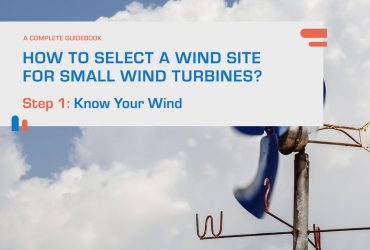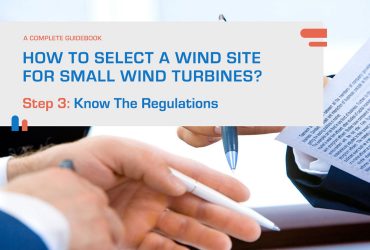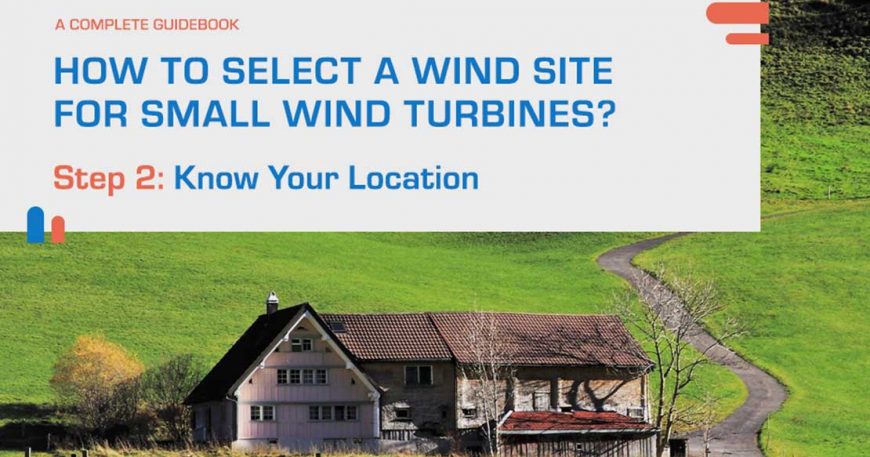
Site selection: Know location
Selecting the most suitable location for your small wind turbine isn’t only about picking where the most wind goes. A wind turbine needs to be placed at a site where there is enough space for installation, maintenance, and operation, but also not too far away from your grid or consumption unit.
How to Select A Wind Site: A Complete Guidebook
“How to Select A Wind Site for Small Wind Turbines?” is a complete guidebook that will guide you through 3 most essential steps of evaluation and assessment for your potential or chosen wind site. You can access the articles on our blog or download the complete guidebook in PDF.
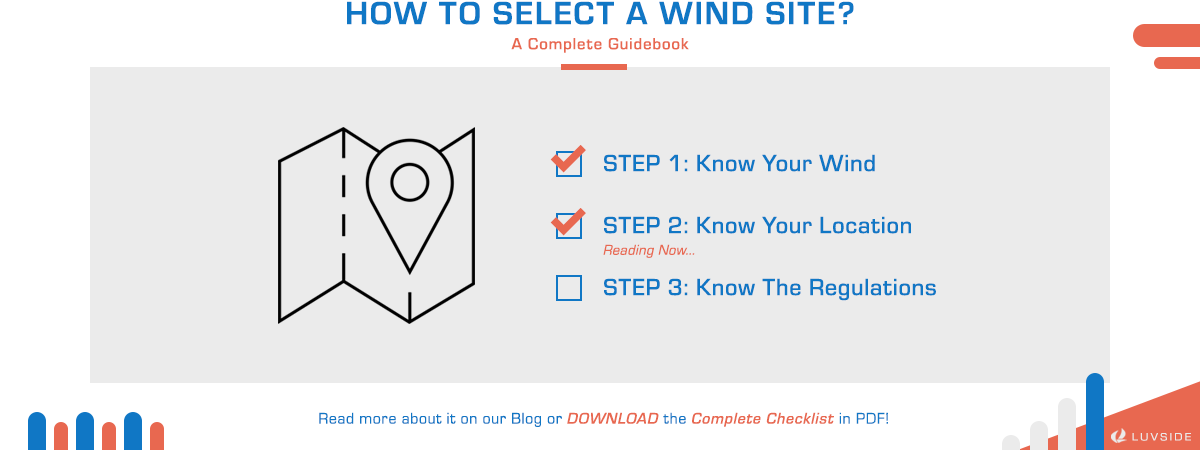
Conduct a location evaluation for your space
After understanding how much wind resource is available locally, the next step is to evaluate the physical space in which you plan to install a wind turbine. This evaluation will help you understand the realistic construction details at the location. If your chosen site is not yet suitable for wind turbine installation, you should consult with architectural professionals about how you can reconstruct the site to meet the requirements or relocate a wind turbine.
What should I evaluate?
1. Ground Foundation
To ensure stability of the wind turbines, it is necessary to construct underground foundation to a certain depth. This will secure the mast to withstand the incoming force of wind instead of falling down at the push of strong wind. It is best to consult with an architect or construction professional to evaluate whether your chosen or potential location is suitable for such ground work.
Key Questions to Ask:
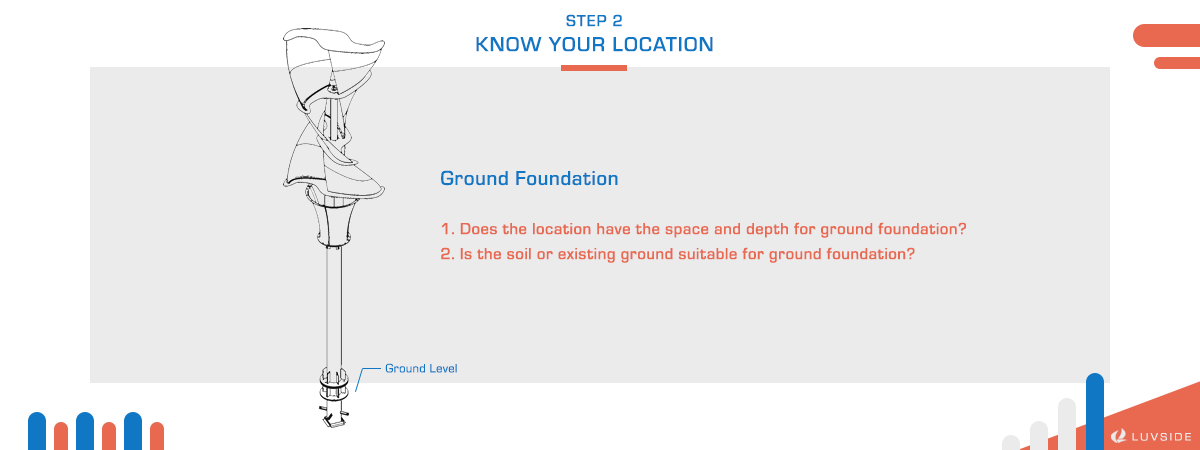
2. Surrounding Space
The surrounding landscape of a chosen site largely influences how much wind resource the wind turbine receives. While regional natural landforms like hills and forests affect the wind speed, nearby obstacles such as single trees, buildings, and other man-made constructions especially located within 200 meters of the turbine might block the incoming wind or create turbulent conditions. If you don’t have a vertical axis wind turbine that operates smoothly under turbulence, it is strongly recommended to conduct a thorough aerodynamic assessment for the location regarding the surrounding obstacles.
Key Questions to Ask:
- What are the main topographic features (landforms) in the area and their shapes, heights, lengths, widths, distances, and directions away from the proposed turbine site?
- Is the turbine far away enough from surrounding wind obstacles like buildings and trees in order to acquire the best wind resource?
- Is there any unfinished construction or new tree that might tower over the wind turbine or block incoming wind?
3. Wiring Distance
Whether the wind turbine would connect to the grid or an external power storage device, you need to consider the length of the wire run between the turbine and the consumption unit— your house, building, battery, or others. A substantial amount of electricity can be lost due to wire resistance, meaning the longer the wire, the more electricity lost. It is advised to consult with an expert to help clarify or conduct proper estimation.
Key Questions to Ask:
Wind turbine on your rooftop
While it is definitely possible to install a small wind turbine on your rooftop, the construction must comply with stricter evaluation standards. Before installing a wind turbine on your rooftop, you need to first make sure the structure of your house can withstand the weight, the force and torque caused by wind, and the vibration caused by the wind turbine. Otherwise, the operation of a wind turbine on your rooftop could very likely damage the house over time.
Since every house is unique, mounting a wind turbine on the rooftop requires individual planning for foundation, material, and other architectural aspects. It is necessary to consult with your architect and acquire relevant assessment analysis before making any purchase decisions.
Next Step: Tackle the bureaucracy and regulations
Once you have completed wind assessment and location evaluation, you can move on to the bureaucracy of wind turbine installation. The last step before you start your wind power transformation is to understand the local regulations and acquire a building permit when needed.
Read more about the next or previous steps in selecting a wind site on our blog or download the complete guidebook in PDF.
Related Content
Let’s face it. Investing in a small wind turbine for your household or company might not be the cheapest expense to spend. How can we...
You have enough wind resources. You have the perfect location for your wind turbine. Now, it’s time to build it. Unfortunately, installing a wind turbine...
